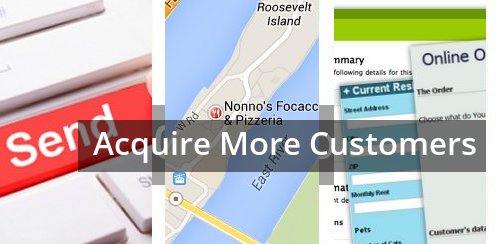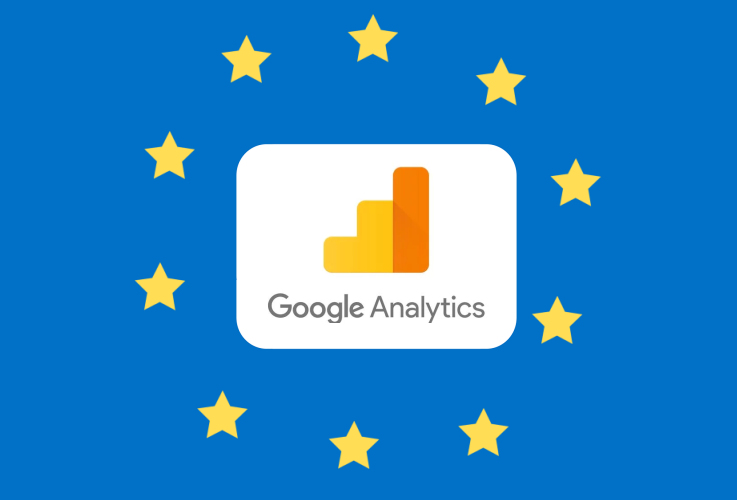
The purpose of most websites is to generate sales - either directly via ecommerce (for websites that sell products) or by generating inquiries that will hopefully result in customers (for websites that advertise a service). For the purposes of this article, a "conversion" represents when one of your website visitors makes an online purchase or submits an inquiry - in other words, when a website visitor is converted into a customer.
It is important to understand that even in the most ideal circumstances, for example when a website visitor is actively seeking your product or service and your website is perfectly optimized to sell to them, you can realistically expect only between 1% and 3% of visitors to "convert". This means that your website has to have so many unique visitors that your business can continue to exist if only a small percentage of them become customers.
Getting More Visitors To Your Website
The most obvious way to generate more customers from your website is to increase the number of visitors to your website - even if only a small fraction of visitors are converted to customers, arithmetically this will result in more conversions. Just as in the offline world, it's important to target online marketing methods that are both affordable to your business model and that suit your business:
- No matter whether your website has an established following of millions of users, or your website is brand new, you should be engaged in Search Engine Optimization (SEO) activities to some extent. In many cases, a small amount of time spent on SEO activities can have a significant effect on a website's ranking for key search terms, which can sometimes have a very considerable effect on the health of a business.
- If your business has a physical location and Google shows local search results for your type of business in your area, you can almost immediately start attracting new customers to your business by engaging in Local SEO. This type of SEO can yield high rankings with less investment than traditional SEO and in much less time.
- Whether or not you believe in the effectiveness of social media marketing, evidence shows that most companies have acquired new customers as a result of using social media. Another benefit is the potential boost to your SEO efforts, attained via links back to your website from your social media accounts. If your website features regularly updated content, posting details of new content to your social media accounts also lets visitors who don't want to sign up to your newsletter stay up-to-date.
- Email marketing is probably the most widely used online marketing method, and for good reason. It is relatively cheap compared to other forms of online marketing and it consistently yields high conversion rates, partly due to the ease in which email campaigns can be highly personalized to the recipient.
- If your business is really struggling to be among the top results for an important search term, perhaps in a particularly competitive industry, you may want to consider paying for search advertising so that you can gain customers via search engines that you would otherwise not have had.
- There are certain specialist online marketing methods that are both exclusive to certain industries, and almost imperative to success in those industries. These include advertising properties on major property portals, advertising products on comparison shopping engines and the use of affiliate programs.
Any cost associated with each marketing channel should result in a profit from conversions that are inextricably linked to that marketing channel. It is also important to consider the "lifetime value" of each new customer gained from each marketing channel - for example, immediate sales may not result in a profit but what if customers from a specific channel are more likely to be repeat customers? It is therefore clearly important to be able to monitor the effectiveness of each of your marketing methods, and you can do this by tracking the source of visitors to your website and their subsequent activity by using website analytics software such as Google Analytics. With the right software in place, you should be able to find out the number of visitors, customers and lifetime value resulting from each of your marketing channels, and subsequently select which to focus more energy or investment into.
The good news is that in most cases it is likely that only a few online marketing methods will suit your business - so your efforts and/or investment can be tightly focused.
Converting More Visitors To Customers
It does not matter how many visitors your website gets if you do not convert any of these into customers. While any website can expect a tiny fraction of visitors to always convert to customers, consider how many more customers you would have if 3% of visitors converted rather than 0.2%. Just small changes to specific aspects of your website and sales techniques can yield surprising changes to conversion rates, with often significant effects for a business.
The first place to start is to make sure you are catering to your visitors:
- By using website analytics software such as Google Analytics, you should know what proportion of your visitors are viewing your website on smartphones and consider upgrading your website to a responsive website design that is optimized for all screen sizes.
- You should also consider whether your website should be designed to accommodate people with disabilities (required by law in some cases).
Once you are happy that your website successfully caters to your visitors, you will want to consider how effective it is at selling your product or service. One of the most important factors in converting visitors into customers, and one which is most commonly underestimated, is your website's copy:
- Before writing your website's copy (and ideally before even planning your website),it is important to clarify what specific actions you ideally want your website visitors to carry out (e.g. submit an inquiry form, call you or sign-up for your newsletter). In other words, what should your copy's "call-to-action" (CTA) be?
- A common mistake when writing for the web is to speak to your readers as if you were addressing a theater full of people. Instead of thinking of your visitors as one large audience you should imagine one of your typical customers or clients and attempt to speak to them, using the same tone and level of formality.
- Make sure you only provide just enough information. Instead of a visitor landing on your website, imagine that you are meeting that person face-to-face. You would probably be able to tell the person what you do in a few sentences or less. Now ask yourself whether your website's homepage tells visitors what you do and why you are good at it in a succinct, informative way. Break up your copy using sub-headings, bullet points and graphics.
- Having got their attention and given your visitors just enough information, you now need to earn their trust if they are to consider acting on your CTA. A prominent phone number not only provides the option to call you with any questions or concerns, but also gives the impression of authenticity. And customer testimonials, peer endorsements, press coverage, certifications and awards or ratings are all excellent ways to convince your visitors that they should trust you with their money.
Only a small proportion of your website's visitors will actually be ready to buy from you at the time of visiting, but these are still generally people who have an interest in your product or service (referred to as "soft leads" in the sales industry). If you were meeting interested parties at a networking event or trade-show, would you let someone just walk away from you and on to the next person after a brief conversation without giving them your business card or asking them for their contact details? Your number one goal should be to either attain their contact information or encourage them to visit your website again so that you have the chance to sell to them when they are ready to make a purchase:
- You can garner the contact information of more visitors by creating a compelling offer (such as a free download or future discount) that they will receive by signing-up to your newsletter.
- You can entice visitors back to your website by regularly publishing exclusive high-quality content that is relevant to your products or services. This strategy has the bonus effect of defining you as an authority on the subject, thereby "pre-selling" your organization's products or services.
- Give your visitors every opportunity to provide their contact information, not just by way of a newsletter subscription. For example, you could allow them to receive notification of new blog posts or news, replies to their comments or replies to their forum posts (if your website features a discussion forum).
- You should always let your visitors stay up-to-date with any regularly updated content on your website using the method they prefer most - whether that be via a newsletter, RSS Feeds, or using social media.
- Another way to re-connect with past visitors is to employ an advertising technique called "retargeting" (sometimes called "remarketing"). Have you ever experienced the scenario where you have been browsing, for example, running shoes and then later see adverts for running shoes on an entirely unrelated website? This is an example of such behavioral advertising.
Since your own website's online forms are probably the primary way in which you attract leads or make sales, if they are not conversion-optimized they can also represent a barrier to your business being successful. Optimizing your website's forms to maximize conversions should therefore be a priority:
- It is important to remember that in most cases you are asking complete strangers to give you their personal information and you therefore need to earn your audience's trust and should only ask for information that is absolutely necessary.
- Your forms should be appealing and easy-to-use - at the very least they should provide the user with polite error messages that give specific instructions about how to remedy any problems, and should always retain any information already inputted.
- If your website is mobile-friendly, you can also make it easier for users by labeling each form field's HTML code with the appropriate input type. For example, when a form field is labeled with the "email" input type, the user's device will automatically display the buttons commonly used for writing email addresses (such as "@" and ".com").
How Does Your Website Compare?
Have you read through this article and been completely happy with your own marketing strategy and your website's ability to convert visitors to customers? If so, you are probably guilty of having a biased view. You visit your own website in your own time, probably to admire it, but most of your visitors will visit only fleetingly, perhaps with the websites of competing organizations open in many other tabs. When reviewing your website for possible improvements, it is therefore important to seek the input of an objective third-party. The truth is that there are always ways to improve your marketing and sales strategy, and since just small changes can make a significant difference to the number of customers you acquire, you should regularly review both.


